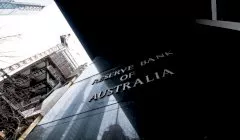Invest
It’s a mixed bag outlook for residential property
What’s next for investors after a record run for Australia’s residential property market?
It’s a mixed bag outlook for residential property
What’s next for investors after a record run for Australia’s residential property market?

Following one of the hottest property seasons on record in 2015, we have continued to see evidence of many property markets across the country cooling off this year, with ongoing global volatility, uncertainty over China and high volatility in the share market all contributing to investors’ softening sentiment.
Auction clearance rates, a key indicator of property market buoyancy, have moderated somewhat throughout the early months in 2016. According to recent figures from CoreLogic RP data, the preliminary national clearance rate has come in below 70 per cent consistently over two months. It is still worth pointing out that levels around the 70 per cent mark still mean the market is active.
Rental growth has also been sluggish when viewed at a macro level. According to CoreLogic RP Data’s Rent Review report, Australia’s combined capital city weekly rental rate was $485 in February, after recording zero growth over the last 12 months.
A mixed market is probably the best way to describe the property sector in 2016. We are seeing our two biggest property markets of Sydney and Melbourne clearly coming down from the top of their cycles, but within these markets there are still some competitive areas. The recent NAB survey of residential property developers, owners, agents and investors shows house price growth is forecast to slow sharply in Sydney and Melbourne given weaker conditions, more restrictive bank lending policy and less interest from foreign buyers. There will be some property areas that might actually reduce in value, which is typical in any market coming off the peak of its cycle, but I’m not as bearish in the prediction of a sharp slowdown, unless global and China conditions deteriorate dramatically.

Brisbane is probably in the mid part of its upswing cycle. According to CoreLogic RP Data, in February 2016, Brisbane’s house values went up by 1.8 per cent – above Sydney’s 0.5 per cent growth. The NAB survey predicted Brisbane would post the strongest performance with expected price growth of 3 per cent in 2016. Canberra might have the same situation – Canberra’s dwelling prices jumped 4.1 per cent over 2015 – equalling Brisbane’s performance, according to CoreLogic RP Data. Adelaide is most likely at the beginning of an upswing cycle while Perth and Darwin are coming off the peaks of their cycles as well, reminding us again that there is no such thing as one single property market in Australia.
Expanding on this point further, there is no one rule for an entire city either and we can expect to see lots of ‘markets within markets’ throughout the remainder of 2016. Different suburbs will be affected differently by investor sentiment, general economic conditions and political decisions.
Given different markets are in different stages of their investment cycles, I expect to see more borderless investors this year. It is still a reasonable market to be looking at, as long as you do the research on specific areas – looking interstate might be the best way to find the right opportunity and get the best return on your money. Also think about diversifying your portfolio to include properties with different profiles (houses, apartments, townhouses, villas, etc) to achieve the right balance of capital gains and rental yields over time.
No matter how the market performs this year, it is always important for all investors to keep in mind that property investment is a long-term strategy. We'd recommend investors conduct an annual review of their property investment portfolios, as part of an overall long-term investment strategy.
Ben Kingsley, chair of Property Investment Professionals of Australia (PIPA)

Property
Retirement communities: a pivotal element in meeting Australia's housing targets
The Retirement Living Council (RLC) has recommended that retirement communities should be considered a vital part in the Australian Government's initiative to fulfill the Housing Australia Future Fund ...Read more

Property
Australians adjust financial strategies amid changing property market dynamics
The 2023 calendar year saw Australian borrowers acquiring a total of $300.9 billion in new loans for property purchases, marking a 12.7% decrease from the previous year. Read more

Property
Split home loans unlocking doors for Aussie buyers
Australians are teaming up to dive into the real estate market and seize the advantages of home ownership, with the trend of split home loans surging as family and friends unite to buy properties ...Read more

Property
Real estate investment: Spotting high-growth potentials
Investing in real estate has long been a favoured approach for Australians looking to grow their wealth. Read more

Property
Granny flats become Aussie families' cost-effective solution to soaring living costs
As the cost of living skyrockets, a forward-thinking trend is sweeping across Australia – granny flats are becoming a favoured living arrangement for older Aussies seeking comfort and proximity to ...Read more

Property
Homebuyers grapple with extended savings period amid affordability crisis
Gone are the days when an Australian dream home seemed just within reach. The path to homeownership in Australia has extended by at least two arduous years, as revealed by the latest insights from ...Read more

Property
Hybrid development unlocks new potential for NDIS housing in metro hotspots
In a ground-breaking strategy aimed at addressing the stark imbalance between the location of Specialist Disability Accommodation (SDA) developments and the actual areas of demand, Aligned Disability ...Read more

Property
Property prices boosted by housing policies: RBA
The central bank has outlined the “pervasive” impact that policy has on property. Read more

Property
Retirement communities: a pivotal element in meeting Australia's housing targets
The Retirement Living Council (RLC) has recommended that retirement communities should be considered a vital part in the Australian Government's initiative to fulfill the Housing Australia Future Fund ...Read more

Property
Australians adjust financial strategies amid changing property market dynamics
The 2023 calendar year saw Australian borrowers acquiring a total of $300.9 billion in new loans for property purchases, marking a 12.7% decrease from the previous year. Read more

Property
Split home loans unlocking doors for Aussie buyers
Australians are teaming up to dive into the real estate market and seize the advantages of home ownership, with the trend of split home loans surging as family and friends unite to buy properties ...Read more

Property
Real estate investment: Spotting high-growth potentials
Investing in real estate has long been a favoured approach for Australians looking to grow their wealth. Read more

Property
Granny flats become Aussie families' cost-effective solution to soaring living costs
As the cost of living skyrockets, a forward-thinking trend is sweeping across Australia – granny flats are becoming a favoured living arrangement for older Aussies seeking comfort and proximity to ...Read more

Property
Homebuyers grapple with extended savings period amid affordability crisis
Gone are the days when an Australian dream home seemed just within reach. The path to homeownership in Australia has extended by at least two arduous years, as revealed by the latest insights from ...Read more

Property
Hybrid development unlocks new potential for NDIS housing in metro hotspots
In a ground-breaking strategy aimed at addressing the stark imbalance between the location of Specialist Disability Accommodation (SDA) developments and the actual areas of demand, Aligned Disability ...Read more

Property
Property prices boosted by housing policies: RBA
The central bank has outlined the “pervasive” impact that policy has on property. Read more






